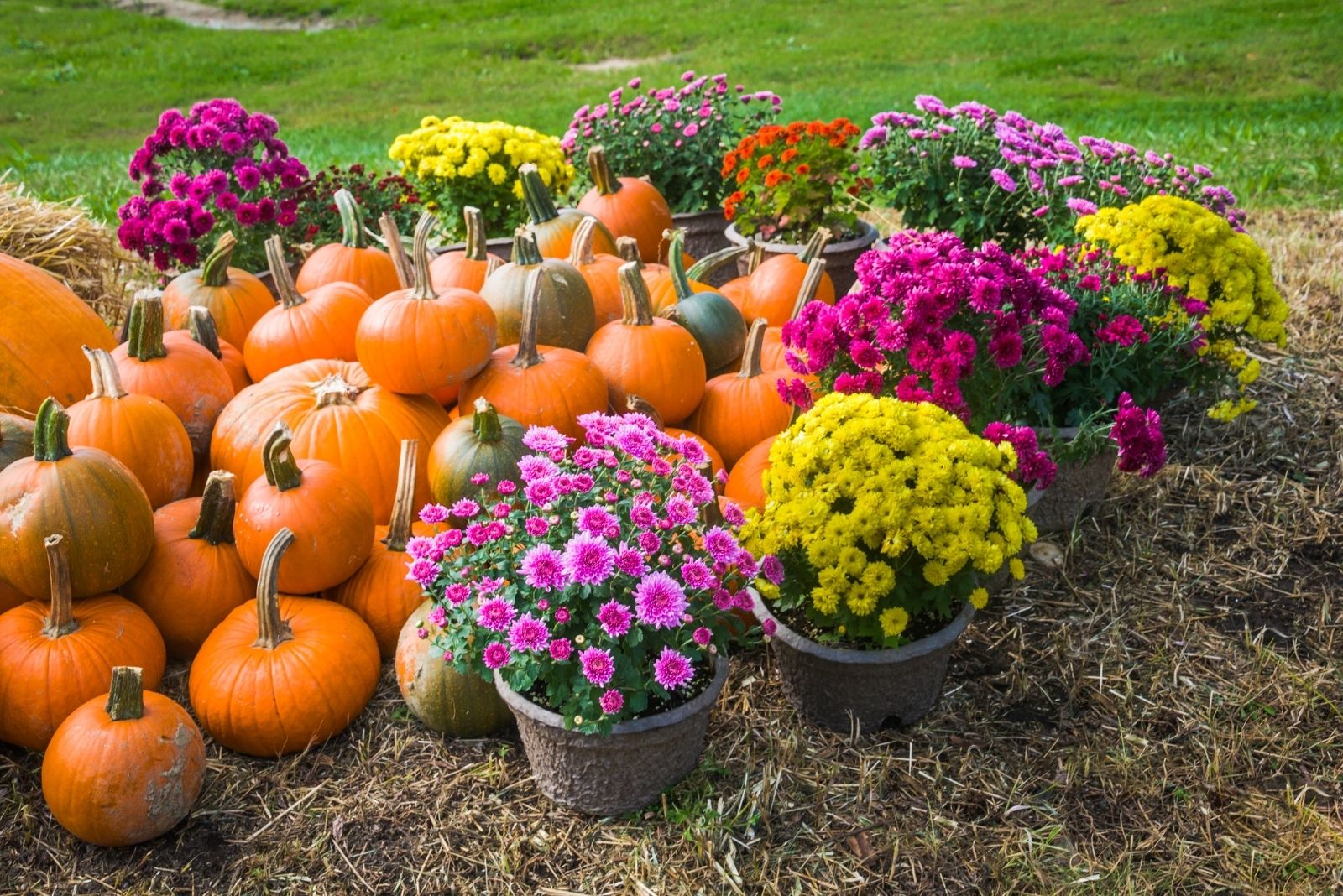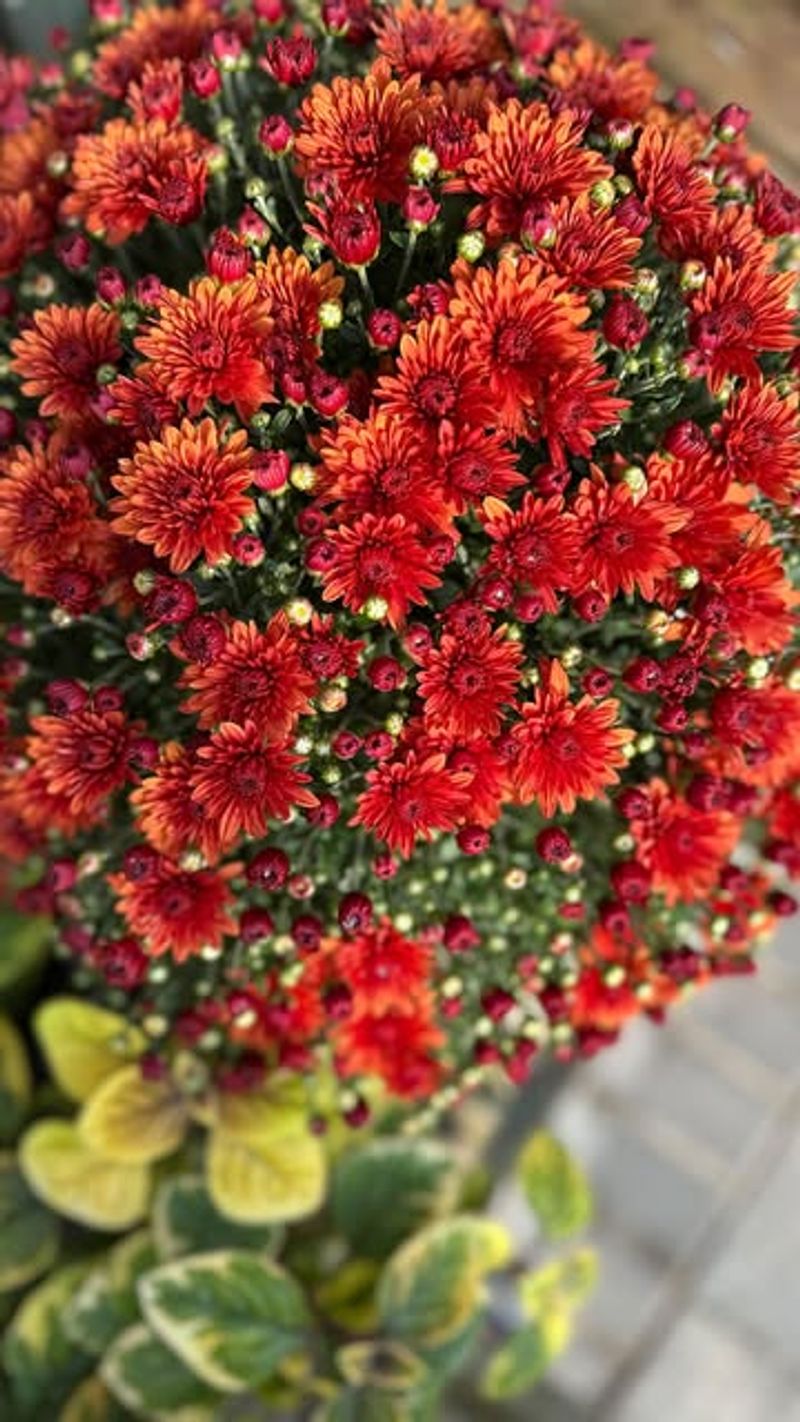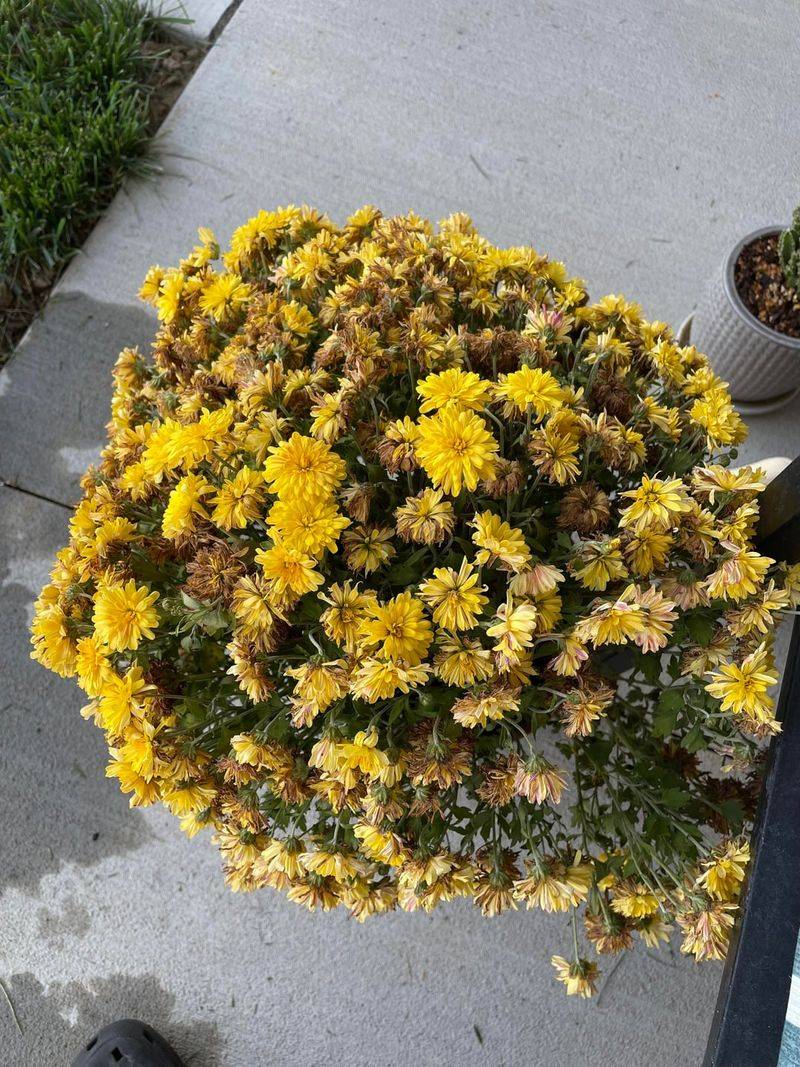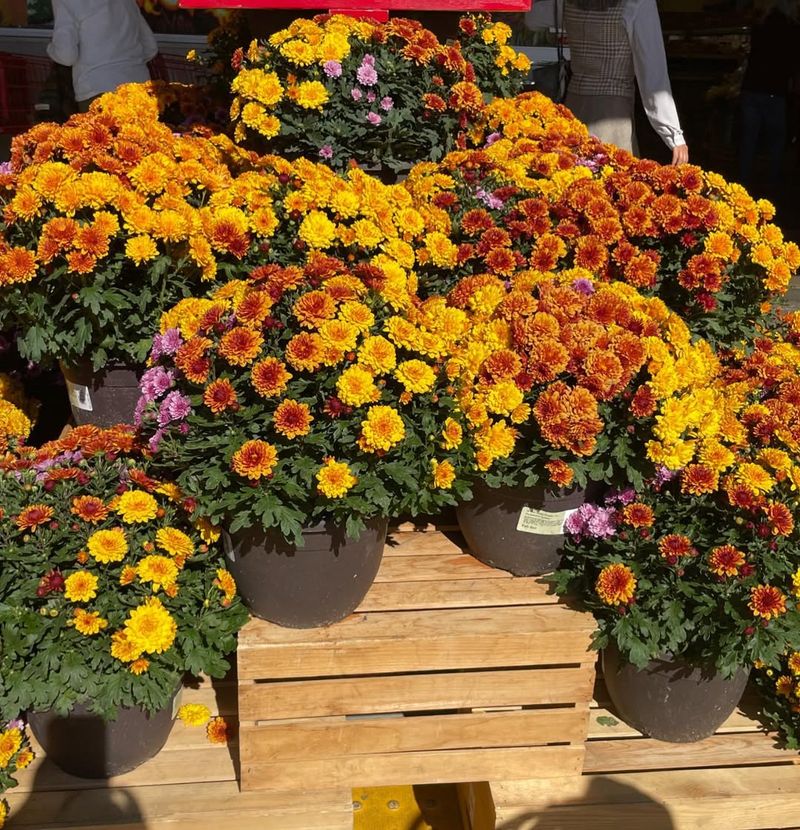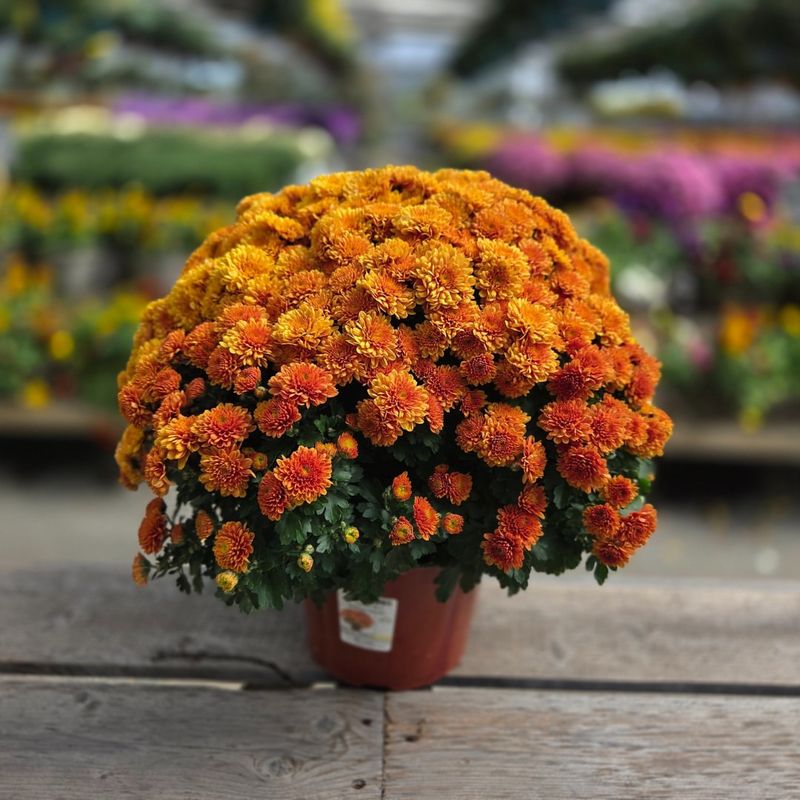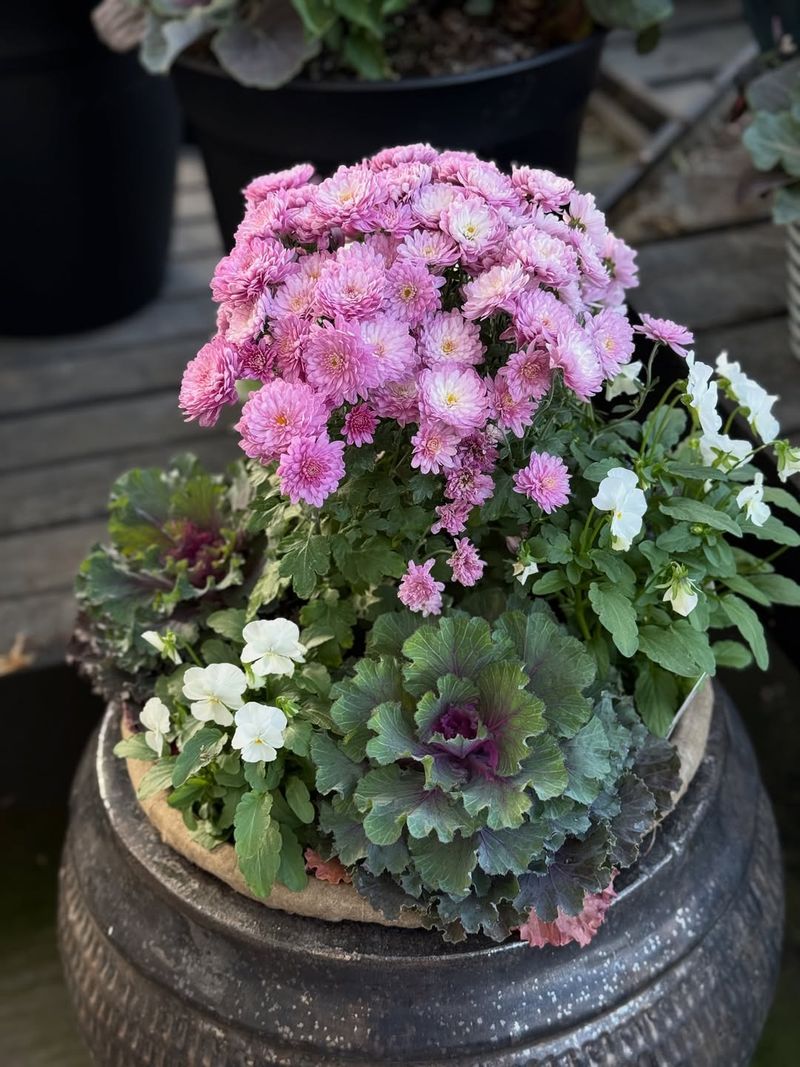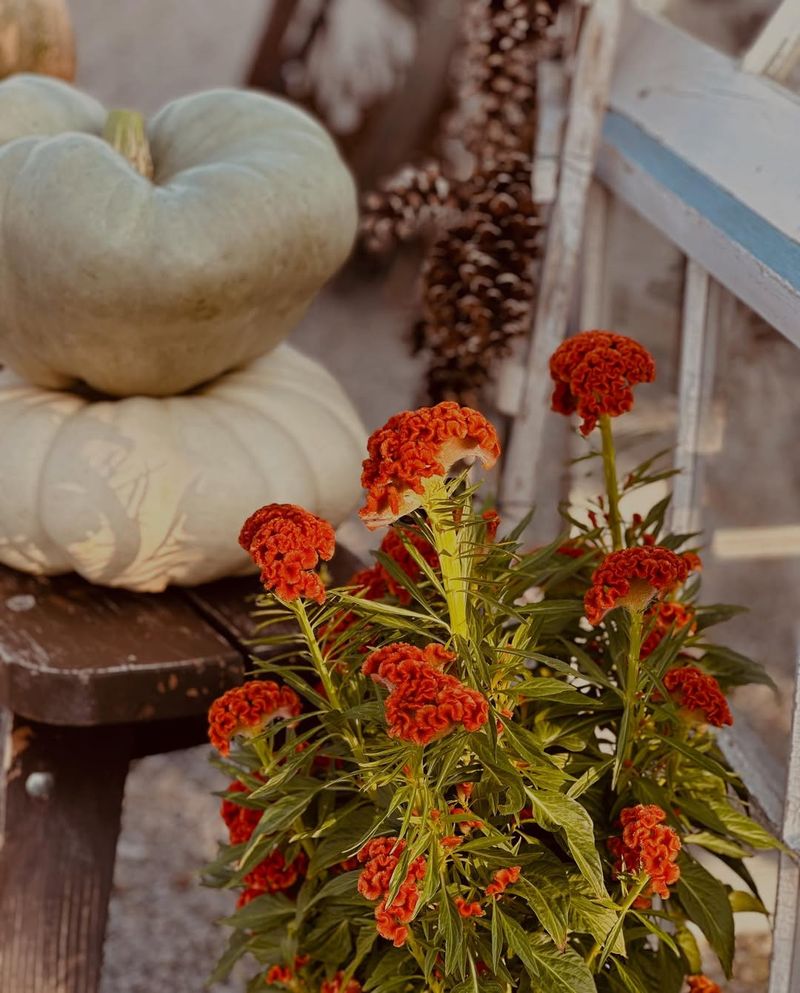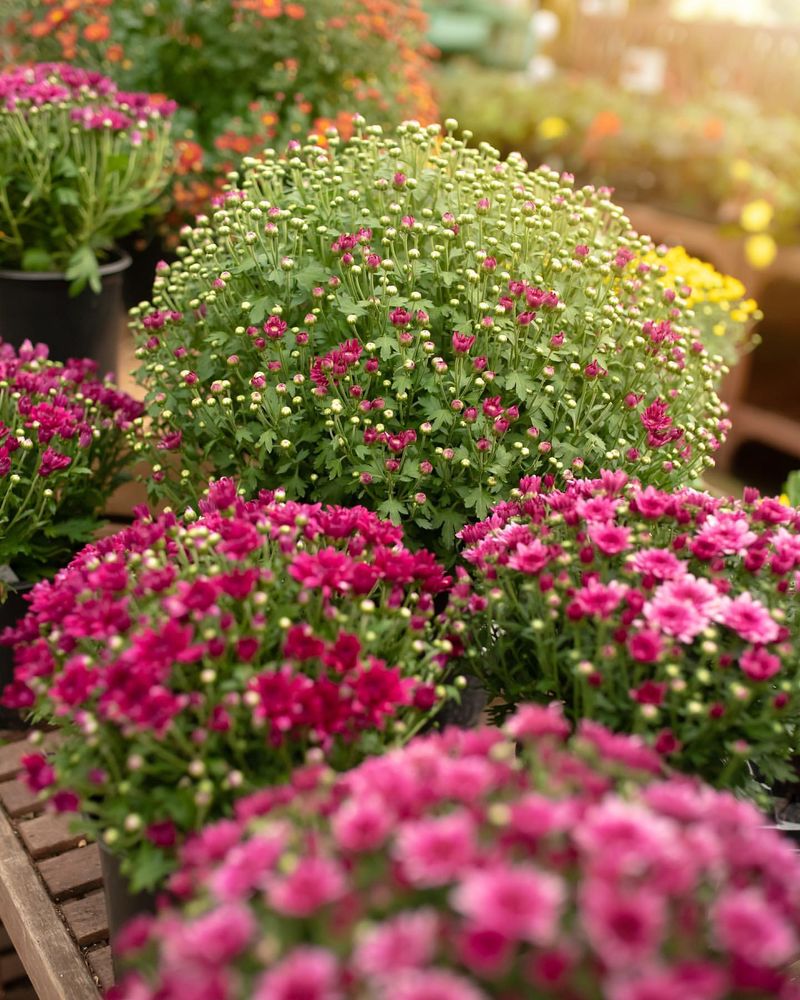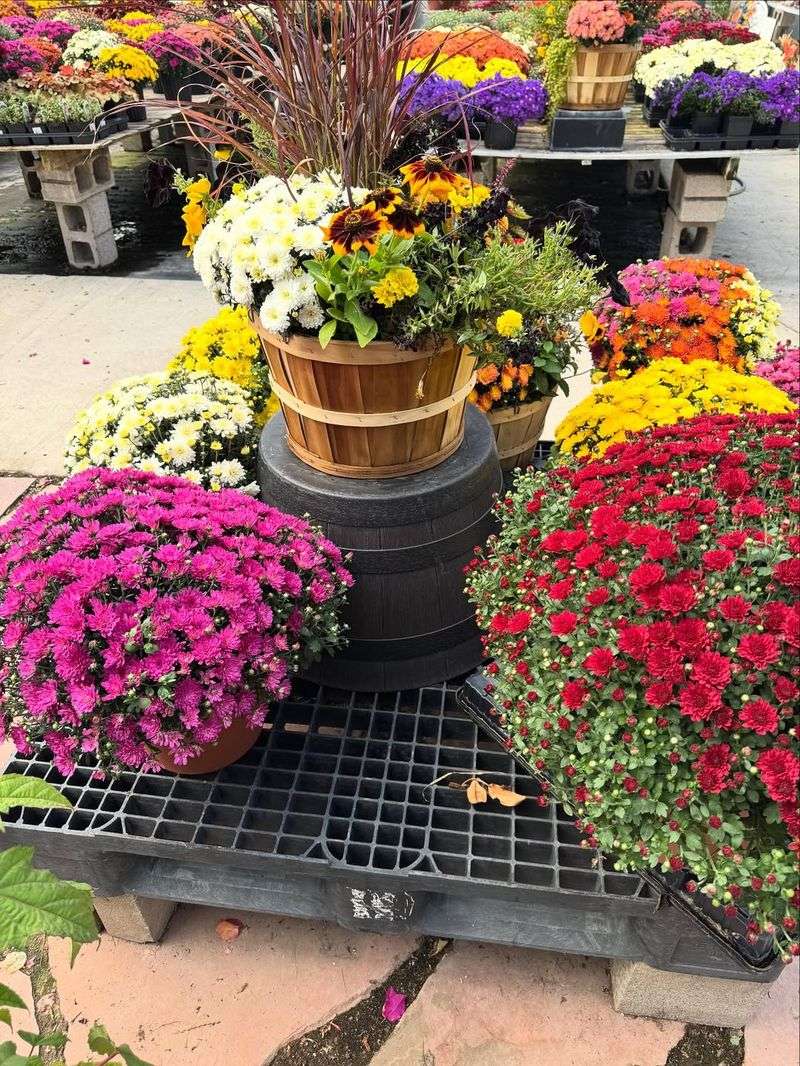Fall mums are a favorite in Massachusetts, but common mistakes can keep them from thriving in your garden. Many homeowners grab the prettiest plants without thinking about what makes them last.
I always check each plant carefully at the nursery because a small issue early on can affect the entire season. Making smart choices when buying mums means you’ll enjoy colorful blooms well into November.
1. Choosing Mums That Are Already Fully Bloomed
Plants covered in open flowers look amazing at the store, but they won’t last as long in your yard. Most of their blooming energy is already spent by the time you bring them home.
In my Massachusetts garden, I’ve learned that checking the buds before buying can save a lot of trouble later. Look for plants with mostly tight buds and just a few open flowers showing color.
This way, your mums will put on a show for weeks instead of fading quickly after planting.
2. Ignoring The Root System Before Purchase
Roots tell you everything about a plant’s health, yet most people never check them. Gently tip the pot and peek at what’s happening below the soil line.
Circling roots that wrap tightly around the pot edge mean the plant is stressed and may struggle after transplanting. For me, choosing mums that weren’t already crowded in the pot made a big difference in how they thrived.
Healthy white or tan roots spread evenly throughout the soil without forming dense mats at the bottom.
3. Buying Mums Too Late In The Season
Waiting until mid-October might seem fine, but mums need time to settle before frost arrives. Plants purchased early September have weeks to establish roots and adapt to your garden conditions.
Massachusetts weather can turn cold quickly, and late purchases often don’t survive the first hard freeze. I’ve watched neighbors lose entire flats because they waited too long to plant.
Earlier shopping gives you healthier plants with better color selection too.
4. Selecting Plants With Yellow Or Damaged Leaves
Yellow leaves signal problems with watering, pests, or disease that won’t magically disappear after you buy the plant. Healthy mums should have deep green foliage from top to bottom with no brown spots or wilting.
Sometimes stores discount damaged plants, but saving a few dollars isn’t worth the headache. I always walk past bargain bins because struggling plants rarely recover even with excellent care.
Check underneath leaves for bugs or webbing before making your final choice.
5. Overlooking Pot Quality And Drainage Issues
Containers without drainage holes create waterlogged soil that rots roots fast. Even if you plan to transplant immediately, poor drainage at the nursery may have already caused damage.
Feel the soil before purchasing—soggy, heavy mix suggests the plant has been sitting in water too long. Proper containers allow excess moisture to escape, keeping roots healthy and oxygenated.
I learned this lesson after losing three plants one year to root rot that started before I even got them home.
6. Picking Leggy Or Sparse Plants
Tall, stretched-out stems with gaps between leaves mean the plant didn’t get enough light during growing. These won’t fill out or look full no matter how well you care for them afterward.
Compact plants with dense branching create that classic rounded shape everyone wants in fall displays. Width matters more than height when judging quality at the store.
For me, passing up leggy specimens and waiting for better stock always pays off with prettier garden beds.
7. Forgetting To Consider Your Garden’s Sunlight
Mums demand at least six hours of direct sun daily to bloom properly and stay compact. Shady spots cause weak growth and fewer flowers, no matter how expensive the plant was.
Before shopping, I walk around my yard in the morning and afternoon to see where sunlight actually hits. Many Massachusetts properties have mature trees that create more shade than homeowners realize.
Matching plant needs to your actual conditions prevents disappointment and wasted money on replacements.
8. Buying From Suppliers Who Don’t Harden Off Plants
Plants grown entirely indoors or under cover haven’t adjusted to outdoor temperatures and wind. Hardening off gradually exposes them to real conditions, making them tougher and more resilient.
Ask nursery staff about their growing methods—quality suppliers transition plants outside before selling. I’ve found that mums from outdoor displays always perform better than those kept under canopies until purchase day.
This simple question helps you avoid delicate plants that wilt the moment weather changes in your Massachusetts garden.

